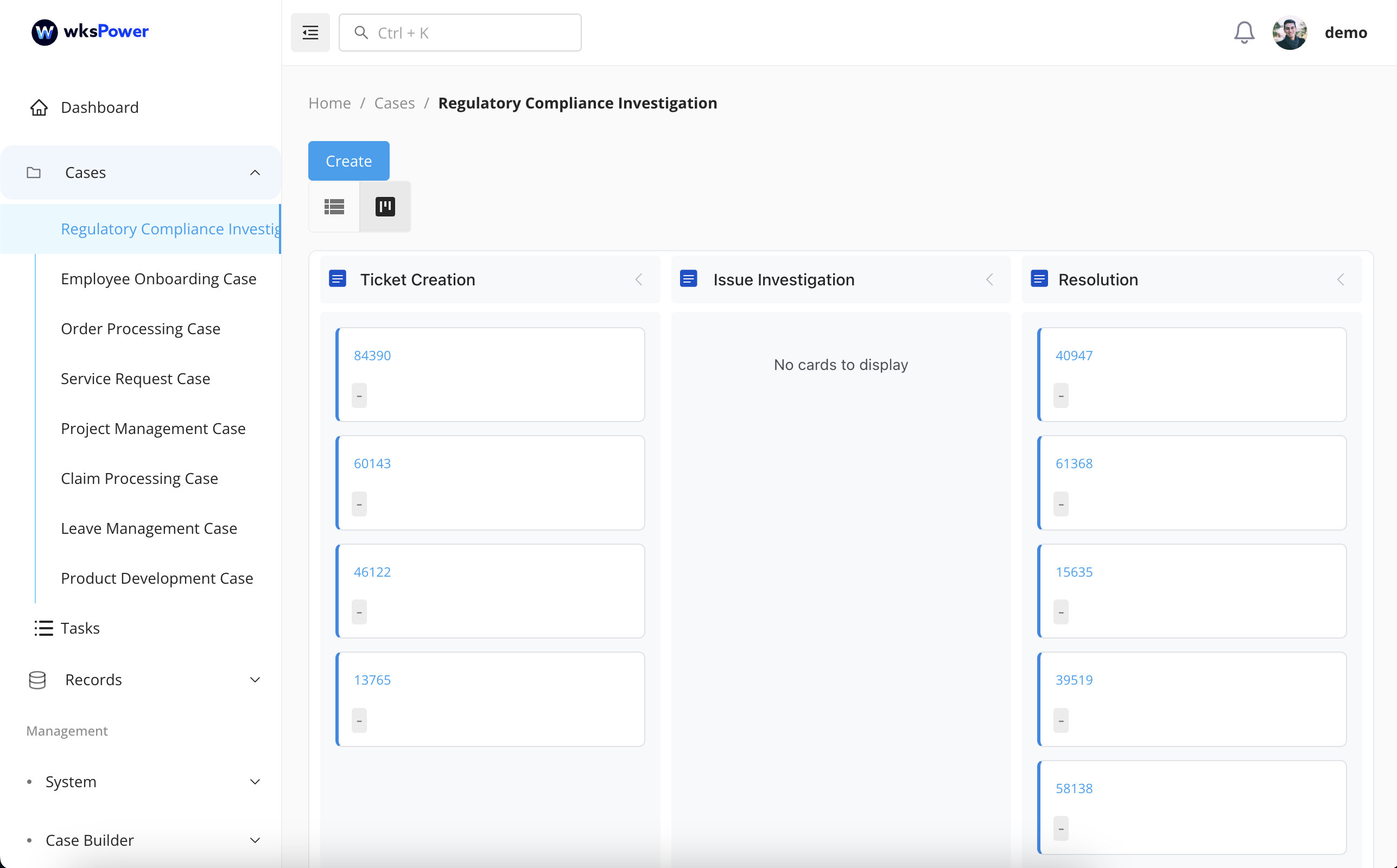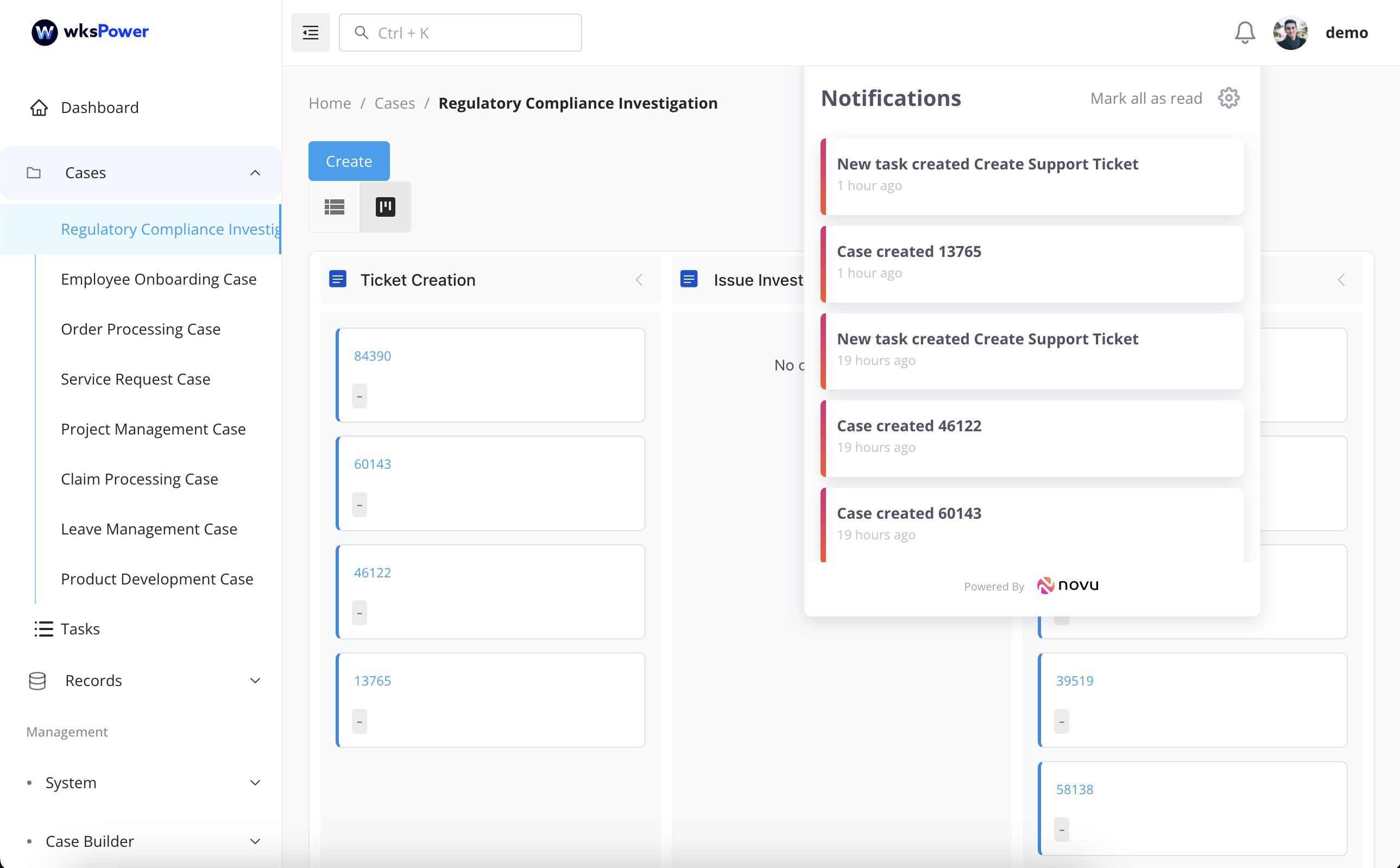Complex Notification Automation and Case Management with open-source WKS Platform and Novu

In the ever-evolving landscape of compliance and regulatory requirements, staying ahead of critical events is paramount for organizations, especially those in highly regulated sectors like finance, healthcare, legal services, and government agencies. An essential aspect of managing these events effectively lies in notifying stakeholders promptly and accurately. However, this task often proves challenging due to the complexity of managing diverse notification preferences, dynamic event triggers, and integrating with multiple communication channels while adhering to stringent data governance standards.
The Challenge: Navigating Complexity in Notification Management
Consider a scenario where a large financial institution is tasked with handling regulatory compliance investigations. The institution must promptly inform compliance officers and relevant stakeholders about crucial events such as potential breaches of regulatory requirements, suspicious trading activities, or legal inquiries. This process involves managing notification preferences for various compliance teams, dynamically handling triggers based on regulatory updates or market changes, and integrating with diverse communication channels like email, SMS, and internal messaging platforms. Additionally, strict adherence to data governance compliance standards is essential to safeguard sensitive financial information.

Navigating Complexity: The Need for a Robust Solution
As the volume and variety of regulatory events increase, the need for real-time notifications for timely responses becomes imperative. Seamless integration of the Case Management system with existing compliance tools and databases further complicates the process. Moreover, ensuring secure and compliant delivery of notifications adds another layer of complexity to the mix.
Introducing WKS Platform and Novu: A Comprehensive Solution
Enter WKS Platform, in conjunction with Novu, offering a robust solution not only for financial institutions but across various industries facing similar challenges. By leveraging Novu's notification infrastructure and combining it with WKS Platform's adaptive case management capabilities, organizations can efficiently manage complex notification requirements while ensuring compliance with data governance standards. Notably, WKS Platform allows processes to be designed using BPMN, providing a flexible framework for modeling and executing business processes seamlessly.

How It Works: Streamlining Notification Automation and Case Management
WKS Platform and Novu provide a comprehensive solution that streamlines notification management and enhances communication across multiple channels. Let's take a closer look at how this integration works:
Dynamic Notification Management: WKS Platform dynamically monitors case changes to uphold compliance standards. These changes, whether in case stages, status updates, data modifications, process advancements, task completions, or communications, serve as triggers for notifications. Stakeholders are promptly informed of these critical events, aligning with regulatory obligations and bolstering transparency and compliance efforts.
Integration with Multiple Communication Channels: With Novu's notification infrastructure, organizations can seamlessly integrate with diverse communication channels like email, SMS, and internal messaging platforms, ensuring that notifications reach stakeholders through their preferred channels.
Data Governance Compliance: Both WKS Platform and Novu prioritize data governance compliance, safeguarding sensitive financial information and ensuring secure and compliant delivery of notifications.
Benefits of Integration: Enhancing Efficiency Across Diverse Sectors
The integrated solution offered by WKS Platform and Novu delivers numerous benefits to organizations across various industries:
- Efficient Notification Management: Streamlines notification management processes, ensuring that stakeholders are promptly informed of critical events.
- Enhanced Communication: Facilitates communication across multiple channels, enabling organizations to reach stakeholders through their preferred methods.
- Improved Case Management: Enhances case management capabilities, enabling organizations to efficiently manage complex regulatory events and ensure compliance with regulatory requirements.
- Data Governance Compliance: Prioritizes data governance compliance, safeguarding sensitive information and ensuring secure and compliant delivery of notifications.
Conclusion: Transforming Notification Management and Case Automation
In conclusion, WKS Platform and Novu offer a comprehensive solution to the challenges of complex notification automation and case management. By leveraging Novu's notification infrastructure and combining it with WKS Platform's adaptive case management capabilities, organizations can efficiently manage critical events, enhance communication across multiple channels, and ensure compliance with data governance standards. With the integration of these powerful tools, organizations can navigate the complexities of regulatory compliance with ease, empowering them to focus on their core business objectives.
To learn more about how WKS Platform and Novu can transform your notification management and case automation processes, visit https://www.wkspower.com/.

